- Home
- John Updike
Higher Gossip Page 33
Higher Gossip Read online
Page 33
The single or dominant figures in many of the genre canvases are painted as if they are objects in a still life, with no more or less attention than Chardin gives to a bunch of onions or a copper pot. The copper pot in The Scullery Maid (c. 1738) steals the show, and the figure in The Cellar Boy (1736–38) serves, stiffly, as the mustering-point for various large containers. These servants’ faces are expressionless, and those displayed in The Turnip Peeler (1738) and the much-duplicated Return from Market are, one could say by a sympathetic stretch, reflective, insofar as lives of drudgery permit reflection. Vermeer’s women seem in comparison engaged by their tasks, quietly smiling as a hum of secluded peace encloses them.
Strikingly absent from Chardin’s genre paintings is any hint of the erotic, even as a flirtatious possibility; his masterpieces of human representation have solitary children as their subjects. Three of these—Girl with Shuttlecock, The House of Cards (c. 1737), and Child with a Top (1737–38)—are arrayed on one wall of the exhibit, with a fourth, The Young Draughtsman (1737), near at hand. The viewer comes rapturously upon these celebrated signature pieces, in which Chardin’s particular innocence and simplicity achieve a human scale both majestic and intimate. The heads are doll-like in their smooth roundness and rosy glow and unshakable calm; the consummate tranquillity of his best still lifes informs their rendering, which is generally smooth, without much of that artful scumble which reminds one (in, say, The Cellar Boy and The Return from Market) of amiably rough Wyethesque (N. C., not Andrew) illustrations in children’s books. Details like hats, caps, playing cards, shuttlecocks, quills and ribbons, flat tabletops, and rounded childish hands are seen with easy clarity and exquisite compositional poise. Much of childhood, these images imply, is a still life, a set of objects arranged on a plane. The children gaze into their own worlds, bright cubbyholes within eighteenth-century grandeur. These relatively spacious canvases sunnily partake of the Enlightenment’s love of logic, decorum, and play.
In an ajar drawer of Child with a Top Chardin has placed a crayon-holder like an artist’s signature. He was, in fact, fond of toying with his signature, affixing it to surprising facets of the represented reality. In many of his early canvases, it is inscribed on the edge of a shelf as if carved there—a demure bit of trompe l’oeil. His sense of the artist as an undeniable presence and of the painting as not a window into reality but a willful sort of artifact liberated him, in the still lifes to which he returned from genre painting around 1748, to freer brushwork and starker, more frontal arrangements. From 1734 to 1735 date three studies featuring copper kitchen utensils, notably rich in color and impasto; The Copper Cistern (c. 1735), housed in the Louvre, rejoices in its range of homely metals and explores their resonances of sheen and reflectiveness with a monumentalizing intentness. So, too, the pots and clay vessels collected around the figure of The Scullery Maid.
After 1748 he returned to fruits and bottles, dead birds and rabbits with an assured flamboyance. The small Grey Partridge, Pear and Snare on a Stone Table (1748) has the bravura dash of a Sargent. A Rabbit, Two Thrushes and Some Straw on a Stone Table (c. 1755) with a kindred swiftness and verve gives us a puddle of brown feathers and fur, death at its meekest. Bouquet of Carnations, Tuberoses and Sweet Peas in a White Porcelain Vase with Blue Decoration (c. 1755), Chardin’s only surviving painting of flowers, uses reds and blues as suavely as he uses grays and browns; dabs of duller paint, brushstrokes doubling as petals, lend his small bouquet the recession of depth in atmosphere. Among the exhibit’s many flurries of bold brushwork, this small canvas is one of the most astonishing and carefreely perfect. A number of small horizontal paintings of edibles, including the well-known Basket of Wild Strawberries (1761), rest in their modesty and (but for the triangular mound of strawberries) murkiness like fruit stored in the cool of a cellar.
The larger and more complex still lifes from his last decades, including some carefully worked out commissioned overdoors (The Attributes of the Arts, The Attributes of Music, both 1765; The Attributes of Civilian Music, The Attributes of Military Music, both 1767), do not make as congenial an effect, to a modern taste, as these fresh and apparently unstudied small canvases. Less has become, for us, more; the virtues prized in academic art—high finish, organization of many elements, a grandiose humanism—are almost valueless now. What we treasure instead is a glimpse, even a fragmented glimpse, rendered so as to reveal a personality in the painter. A plaster cast of Mercury, introduced into The Attributes of the Arts and Their Rewards (1766; commissioned by Catherine the Great of Russia), though impeccably enough painted, seems arrived from a dusty attic. Chardin executed several versions of this refined jumble, and the two on view here, from St. Petersburg and Minneapolis, are disconcertingly identical, devoid of creative second thoughts: a machine might have done the work. It suits our modern fancy to think of Chardin as a saint of perception, a kind of monk guilelessly contemplating the glory in a glass of water or an earthenware coffeepot, “giving to each thing its color,” Proust wrote, “each form of shining significance for the eye, if obscure significance to the brain.” But Chardin was also an unabashed self-copier, once the image was locked in. The “majestic” mallard hanging by one leg becomes a word in a sentence instead of a shout when transposed to a large oval still life, Duck Hanging by One Leg, Pâté, Bowl and Jar of Olives (1764). Just as a certain clumsiness reinforces the earnest worth of Chardin’s early work, some of his later, more conventionally ambitious pieces are vitiated by his serene professionalism.
And yet less of an artisan might not have resorted to pastels when his eyes, affected by a lifetime of lead-based pigments and binders, contracted, like Degas’s a century later, amaurosis—paralysis of the eyes. How much poorer our sense of this painter would be without the self-portraits he executed in pastel, having never attempted one in paints. At last the man himself appears, wearing comical getups of beribboned turbans on his wigless skull, and owlish round spectacles, and, in the self-portrait of 1775, an eyeshade that makes him look like a batty grandmother, yet one full of dignity, with an expression, to quote Proust once more, “daring you to smile, or to make an excuse, or to weep.” His last self-portrait was executed in 1779, a few months before his death, and, though signs of age darken and crease his visage, his attitude is alert, the crayon uplifted in his hand. His self-portraits are impish, and cocky in a reserved Gallic manner, “subtly imperious.” Some of his late still lifes, too, have an impish touch: the slice of melon in The Cut Melon (1760) posed atop the triangular chasm left by its removal, and, in The Brioche (1763)—a painting left in Paris but present in the catalogue—the wonderfully painted double dome of bread topped, as was the custom with a brioche de mariage, by a sprig of orange blossoms. The joke, if there is one, is on all those contemporary painters of pomp and sexual power who did not see that the highest subject of painting is the painting itself, and that the ordinary plain things and persons around us offer the painter not just as good an excuse as any, but the best excuse possible, since the everyday world is what is always there.
1In his foreword to his 1939 volume Art in the Age of Dürer, he wrote: “This book appears before a Germany that is once again forced to fight for its life and challenged to even greater victory.… The author, who is no longer able to participate personally in this second great war, hopes for a small consolation from this minor contribution to the fortification of the German nation: that its perusal may, in a small way, serve to inspire action.”
2Quoted by Pierre Rosenberg in his catalogue essay. This and all subsequent quotations from the catalogue, edited by Monsieur Rosenberg for the Réunion des Musées Nationaux, Paris, are translated from the French by Caroline Beamish.
3Shadows and Enlightenment (Yale University Press, 1995).
ROMANTICS AND REALISTS
“Therefore I Print”
WILLIAM BLAKE, at the Metropolitan Museum of Art, New York, March 29–June 24, 2001.
The Metropolitan’s Blake exhibition originated at the greatly enlarged Tat
e Gallery, and the London version included over twice as many items as the current one; such a vast sampling, served up scarcely more than two decades after another comprehensive show at the Tate in 1978, reveals an inordinate British affection for Blake. He represents, if we may presume to extrapolate an English view, an innocent religiosity, both ardent and nonsensical; a triumph of eccentricity, the Englishman’s cherished privilege and informal purchase on freedom; a plea and protest on behalf of the bejewelled old England buried beneath the grime of industrialism, “the dark Satanic mills” erected on the rational, mechanical, heartless premises symbolized by Newton and Voltaire; and a thrilling voice, like that of his contemporary Robert Burns, from the lower classes, lending proof of the progressive righteousness of Britain’s curious democracy.
Blake, born in 1757, was one of five children of a London hosier; his artistic leanings were placated by apprenticing him to an engraver, and Blake for the rest of his three score and ten years was a craftsman, an engraver, redolent of acids and inks—“still poor, still Dirty,” an observer commented of the artist and his faithful wife, Catherine. Not only did he engrave his own work and that of others in the painstakingly linear, “dot-and-lozenge” intaglio style of the time, but he developed his own method of relief engraving, painting onto the copper with an impervious liquid and then subjecting the plate to a double acid bath which left his marks standing. The process involved his laboriously writing his self-published poems in minute backward lettering, and produced an integrity of text and illustration not seen since medieval manuscripts, if then. The visions and rapt enthusiasms to which he was prone at times did distract him—he wrote, “My Abstract folly hurries me often away while I am at work, carrying me over Mountains & Valleys, which are not Real, in a land of Abstraction where Spectres of the Dead wander”—but a great deal of close, intent work was nevertheless accomplished.
The scaled-down but still-ample American version of William Blake is housed in the lower level of the Robert Lehman Wing, beyond the medieval hall, beneath a farewell exhibit to Balthus. It is shadowy down there, and the conscientious viewer emerges with smarting corneas. Blake’s largest surviving works are watercolors, with pen and ink, two feet wide; his booklets Songs of Innocence and Songs of Experience (combined in 1794) were printed from plates measuring less than three by five inches, often in a pale-ochre ink. In the large room containing a spread of these rare pages the Metropolitan has thoughtfully supplied magnifying glasses. In the nineteenth century, Blake loosened up: his watercolor illustrations to Milton’s Paradise Lost (1808) have a stately, flowing, flamelike grace; the figures, mostly of Albion, in his Jerusalem (1820) possess a largeness that only with much strenuous foreshortening fits into the spaces left to them by the crowded text; his illustrations to Dante, a huge project commissioned by his last supporter, John Linnell, in 1824 and far from completed when Blake died in 1827, show a new sweep and spaciousness. Certain of them—Dante Running from the Three Beasts, The Ascent of the Mountain of Purgatory, The Lawn with the Kings and Angels—could claim to be landscapes, airily deepening the shallow space that customarily backs the weightless acrobatics of Blake’s figures.
As befits an engraver, Blake lived in his lines. Energy, energy unbound, is his gospel, and the line is its vehicle. His colors are generally tints, varying on each print pulled. In the combative, self-promoting “Descriptive Catalogue” to his ill-fated exhibition of 1809, he proclaimed his loyalty to the “hard and wirey line of rectitude.” He wrote, “The Beauty proper for sublime art is lineaments,” and proclaimed, “He who does not imagine in stronger and better lineaments, and in stronger and better light than his perishing and mortal eye can see, does not imagine at all.” He denounced “that infernal machine Chiaro Oscuro,” claimed that Rubens loaded his canvases with “hellish brownness,” and condemned the oil technique—“a fetter to genius, and a dungeon to art”—that had come to dominate painting: “Oil … deadens every colour it is mixed with, and in a little time becomes a yellow mask over all that it touches.” Instead, Blake sought, with sometimes friable and unstable results, to revive the fresco technique of muralists, using glue-based washes to imitate egg tempera on wet plaster; he never travelled to Europe and never saw at first hand the handiwork of his models Michelangelo and Raphael.
Blake’s watercolors and tinted prints come across as drawings first and representations of depth and atmosphere second. In the exceptionally fine and large-scaled illustrations to Paradise Lost, the delicate outlines limn both form and the flow of force in a floating world innocent of receding perspective. In Christ Offers to Redeem Man, for instance, the double angels on either side of the Christ-God central configuration flow downward in robes indistinguishable from abstract ripples, and God is surreally reduced to one foot, a head purely of hair, and two massive hands that hold the supple, submissive body of Christ with the hypersensitive apprehension of a lover. In his filmy robe Christ has a shapely calf and more than a hint of buttocks; the sense of erotic currents overwhelms the theological content.
Blake, Christ Offers to Redeem Man, 1808. Pen and watercolor. (Photo Credit Ill.8)
The body in Blake is coterminous with the human spirit: “The notion that man has a body distinct from his soul, is to be expunged.” The notion of nudity, in Blake’s time as in ours, carried with it the suggestion of a prelapsarian, uncorrupt world: when Blake and his wife were discovered sitting nude in their garden in Lambeth, he purportedly remarked, “It’s only Adam and Eve, you know.” His nudes are not anatomically correct—the male genitals are fudged and the female is denied her triangle of pubic hair—but they appear naked even when clothed, with the peculiar flayed nakedness of anatomical illustrations. Marilyn Butler points out in her catalogue essay, “Blake in His Time,” that “his drawing of the body is visibly indebted throughout to eighteenth-century anatomical drawing.” During his brief period of study at the Royal Academy, he attended the classes of the anatomist William Hunter, but it is not clear when, after the Royal Academy, Blake ever looked at a nude body beyond his own and his wife’s. His nudes are foreshortened à la Michelangelo, but without convincing us, as Michelangelo does, of an internal logic of muscle and bone. Blake’s nudes, with their linear indications of vein and sinew, can be expressive, and arouse tenderness in us—consider the two pathetic figures, bowed in parallel as if being whipped, on the title page of Songs of Innocence and of Experience, and the long-thighed Oothoon depicted in Visions of the Daughters of Albion (1793), tied to her tormented rapist, Bromion, while her love, Theotormon, rejects her in an abject huddle of disembodied arms and legs.
His nudes strike us as above all a set of symbols, pliantly subject to abstract arrangement on the page. In the illustration to page 72 of Edward Young’s Night Thoughts (c. 1795–97), Hope becomes a six-winged tiny angel, precisely vertical, reaching down to touch the lips of a frowning poet, whose impossibly circular knee floats toward us while his other leg resolves in a spiral of abstract form. Even more amazingly stylized is the tawny watercolor Christ in the Sepulchre, Guarded by Angels (c. 1805, and shown at the Royal Academy in 1808), wherein the leaning angels with their uplifted wings, tip feathers touching, form a flamboyant triangle on the base of Christ’s supine body. Such maneuvers are more legible but not much less artificial than the neatly packed sardines of The Rout of the Rebel Angels (1808) or the rectangular configuration of the color print The House of Death (c. 1805) or the march of fists and faces across The Stygian Lake, with the Ireful Sinners Fighting, from his unengraved illustrations to Dante. As a drill sergeant for souls, Blake was Dante’s soulmate, and his seething Vision of the Last Judgment (1808) has a bubbling, plaited, turbulent incorporeality that makes it a more plausible, if less humane, vision than Michelangelo’s great wall of struggling nudes. Perhaps Blake saw angels too easily; he skywrites with bodies; they form a species of handwriting, spelling out messages to which we have lost, often, the code.
His humanitarian vision, his cry against repression, spring
s from the same liberal optimism and sense of infinite human possibility that allow him to manipulate and stretch the human figure, as an emblem of liquid, plastic spirit. His most memorable images depend on contortion: would Newton (c. 1805) be iconic—The Economist and Rolling Stone recently made covers of it—were it not for the magnificent, compressing gesture that lets the unexpectedly curly-haired, Apollonian savant, naked as a syllogism, reach way down with his calipers and forefinger to touch a diagram at the level of his elegant feet? (Blake’s feet are invariably elegant.) Would Nebuchadnezzar (c. 1805) be nearly as marvellous were the humbled king not on all fours, growing claws on his toes, veined with ribbons of transformation, and registering on his creased face the dismay of metamorphosis? Would The Ancient of Days (1824?) be less Godlike if he were not, in his reddish-brown empyrean, composed of two legs, one huge reaching arm, and white hair and beard whipped sideways by a cosmic wind? Gesture, in Blake, links the seen and the unseen; reaching and pointing recur, evangelistically. The catalogue has for its cover The Angel of the Revelation (c. 1803–5), who holds in one hand a tiny open book and in the other seems to be hailing or upholding the universe; Albion Rose (c. 1796) announces himself with outflung hands in a sunrise of triumphant expectation. Albion becomes Jerusalem; all “Human Forms” become immortal. This color-printed engraving, finished with pen and ink and watercolor, is one of the few Blakes on view that compel awareness of color; a full spectrum encircles the pink youth at the center, as he stands on rocks made unintentionally lichenous by the blotting and blurring of printing inks. Newton and Nebuchadnezzar also bear this lichenous look, composed of vibrant ochres and blue-greens, but within a cavelike darkness.
I found the exhibit itself a bit cavelike, and confusing. My notes (e.g., “I labor upwards into futurity” Swimmer) bear, I discover, little relation to the catalogue, and its index offers an indifferent guide to its contents, involving many bracketed numbers in both boldface and roman type. The exhibition does not attempt a strictly chronological arrangement; perhaps none was possible. Blake’s creative output abounded in delays and abandoned projects—much of what is admired and incorporated into the history of art was intended to be engraved and placed in a book. Books, rather than paintings for sale and display, were his primary creative objective; though he looked backward to Gothic art and mythic imagery, he was thoroughly enlisted in the print revolution. The most lavish of his finished productions, Jerusalem (consisting of one hundred plates, all but a few of them illustrated, and printed in six copies, five in black ink and one in orange and hand-painted), opens by stating “To the Public”:

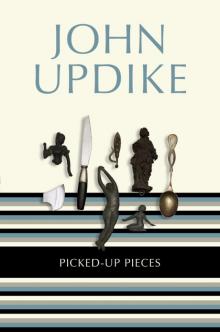 Picked-Up Pieces: Essays
Picked-Up Pieces: Essays Bech: A Book
Bech: A Book Roger's Version: A Novel
Roger's Version: A Novel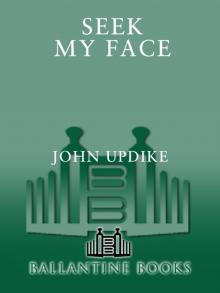 Seek My Face
Seek My Face The Carpentered Hen
The Carpentered Hen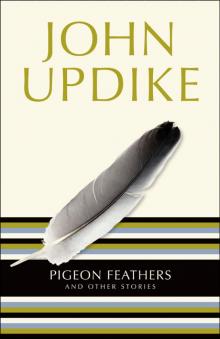 Pigeon Feathers: And Other Stories
Pigeon Feathers: And Other Stories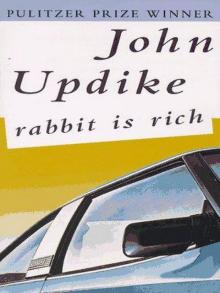 Rabbit Is Rich
Rabbit Is Rich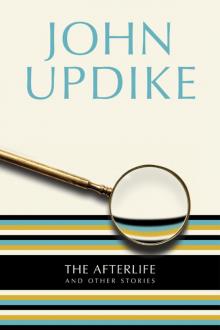 The Afterlife: And Other Stories
The Afterlife: And Other Stories Rabbit at Rest
Rabbit at Rest The Witches of Eastwick
The Witches of Eastwick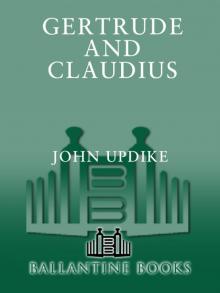 Gertrude and Claudius
Gertrude and Claudius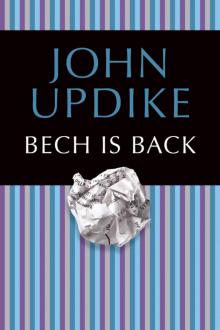 Bech Is Back
Bech Is Back Hub Fans Bid Kid Adieu: John Updike on Ted Williams
Hub Fans Bid Kid Adieu: John Updike on Ted Williams Marry Me: A Romance
Marry Me: A Romance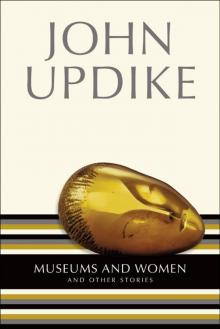 Museums and Women: And Other Stories
Museums and Women: And Other Stories My Father's Tears and Other Stories
My Father's Tears and Other Stories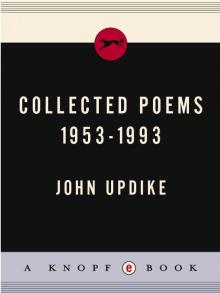 Collected Poems, 1953-1993
Collected Poems, 1953-1993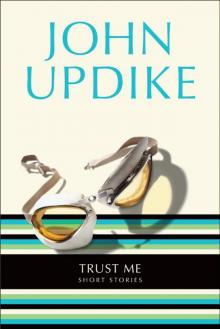 Trust Me: Short Stories
Trust Me: Short Stories Odd Jobs: Essays and Criticism
Odd Jobs: Essays and Criticism Rich in Russia
Rich in Russia Higher Gossip: Essays and Criticism
Higher Gossip: Essays and Criticism The Widows of Eastwick
The Widows of Eastwick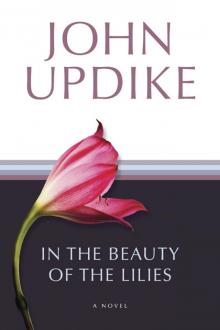 In the Beauty of the Lilies
In the Beauty of the Lilies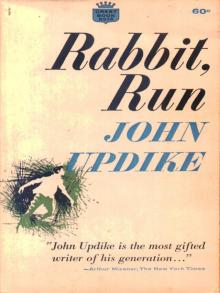 Rabbit, Run
Rabbit, Run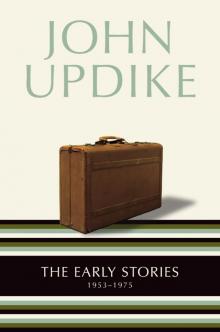 The Early Stories: 1953-1975
The Early Stories: 1953-1975 Rabbit Redux
Rabbit Redux S.
S.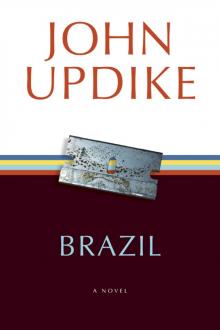 Brazil
Brazil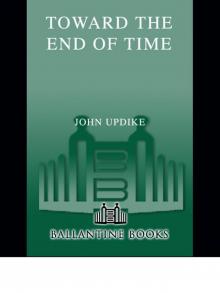 Toward the End of Time
Toward the End of Time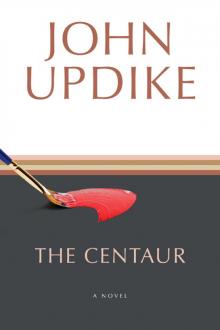 The Centaur: A Novel
The Centaur: A Novel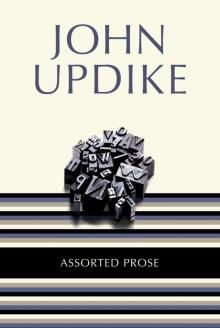 Assorted Prose
Assorted Prose Memories of the Ford Administration
Memories of the Ford Administration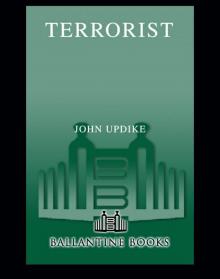 Terrorist
Terrorist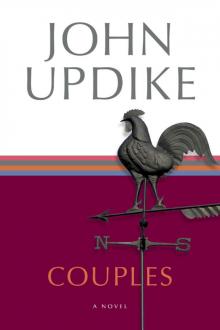 Couples: A Novel
Couples: A Novel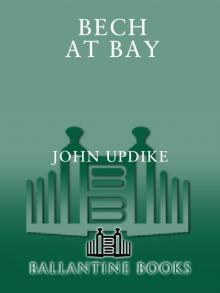 Bech at Bay
Bech at Bay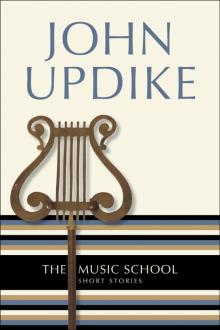 The Music School: Short Stories
The Music School: Short Stories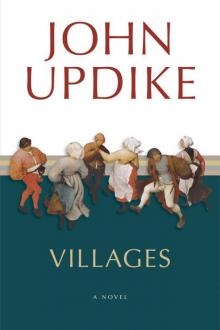 Villages
Villages S
S Roger's Version
Roger's Version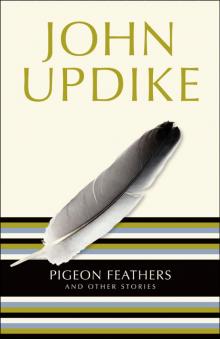 Pigeon Feathers
Pigeon Feathers Higher Gossip
Higher Gossip Rabbit Redux r-2
Rabbit Redux r-2 Memories of the Ford Administration: A Novel
Memories of the Ford Administration: A Novel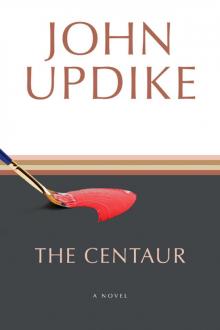 The Centaur
The Centaur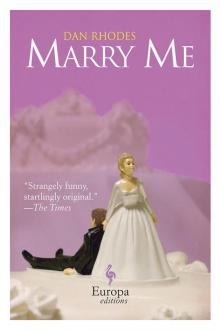 Marry Me
Marry Me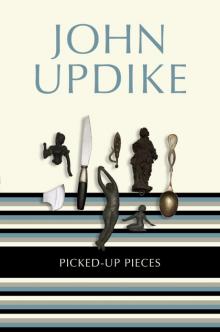 Picked-Up Pieces
Picked-Up Pieces Bech
Bech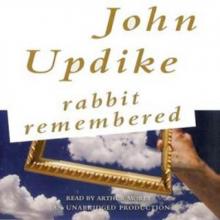 Rabbit Remembered
Rabbit Remembered Trust Me
Trust Me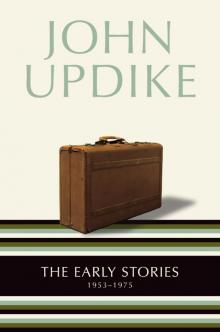 The Early Stories
The Early Stories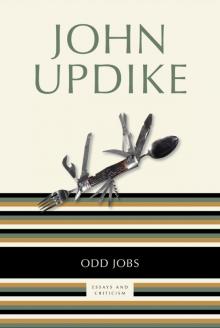 Odd Jobs
Odd Jobs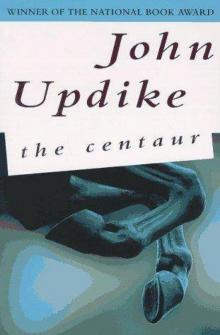 The Centaurus
The Centaurus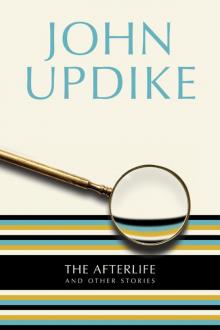 The Afterlife
The Afterlife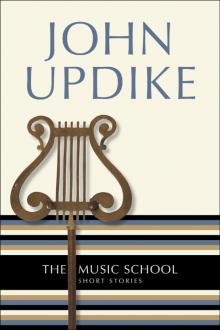 The Music School
The Music School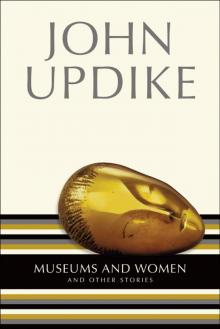 Museums and Women
Museums and Women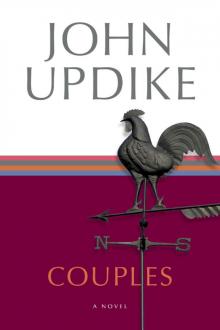 Couples
Couples